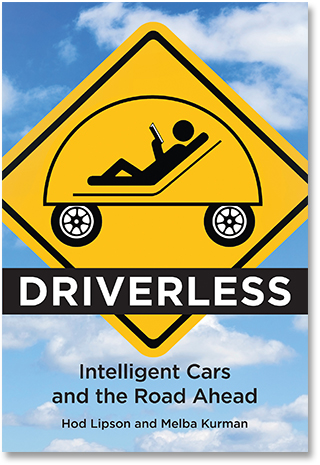Driverless, book review: Eyes off the road, hands off the wheel


Driverless: Intelligent Cars and the Road Ahead • By Hod Lipson and Melba Kurman • MIT Press • 328 pages • ISBN: 978-0262035224 • £19.95 / $29.95
There is an old joke that has Bill Gates, then CEO of Microsoft, boast to the CEO of General Motors that if Microsoft built cars, they would cost $25 and get 1,000 miles per gallon. The GM CEO is supposed to have responded that yes, but then the cars would crash twice a day for no reason.
The joke has been much elaborated upon since its original appearance, to the point where Snopes has had to debunk it. I was reminded of it recently when I read that the Federal Aviation Authority ordered that Boeing 787 Dreamliners be rebooted every 21 days -- because after 22 days there is a chance that all three flight control modules might all stop working simultaneously.
In Driverless: Intelligent Cars and the Road Ahead, Columbia professor Hod Lipson and technology writer Melba Kurman, who previously teamed up to write Fabricated: The New World of 3D Printing, invoke that joke to remind us what a difficult task creating a self-driving car really is. You need, as they explain in the rest of the book, a robust operating system, navigational aids, deep (that is, neural network) learning, and copious amounts of data. To run a car, robot operating systems need real-time reaction speed, 99.999 percent reliability, and better than human-level perception. We -- and they -- can only guess the future effects of succeeding at all this.
Enthusiastic
Lipson and Kurman are enthusiastic about the future they imagine: less congestion (because cars can become smaller), less pollution, more convenience, also platooning, efficiency, shared space. They're not alone: last year, Clive Thompson pointed out in Mother Jones the massive amounts of town centre space that could be reclaimed by eliminating the need for downtown parking. Given their subject, it's arguably not their job to point out that much of the same could be had by improving public transportation -- in much of the US, public transport isn't much of an option. However, Lipson and Kurman do take the trouble to consider the benefits that may be lost if the ability to bundle your child into a self-driving car means the social aspects of every journey are lost. Personally, I worry about public health in a world where everyone is dropped off right in front of their destination: it's good to walk at least a little bit.
The two most interesting aspects of this book for those who are already familiar with the technology are the history that Lipson and Kurman unearth, and the discussion of the battle for supremacy between car manufacturers and software companies.
Historically, many efforts focused on changing the highways: embedding magnets or electronics to guide the cars. As the authors note, this involves great expense that even a wealthy country like the US can't afford. That sort of money would be better spent on repairing and improving the existing infrastructure. In an analogy with the internet (dumb network smart endpoints), leaving the highways as they are and making the cars smart enough to navigate them is the more promising tack -- if we can get the security right.
Read more book reviews